Al ritmo de "candombe"
by Eduardo Storch
Llamadas de San Baltasar - The “Calls” of San Baltasar
The Uruguayan carnival is a very important part of popular culture and has its own characteristics, typically centred on "Candombe".
"Candombe" was the most important and significant dance and musical-religious expression of the Afro-collective, and it continues to be one of the most eloquent musical expressions, having spread to such an extent throughout society that it is one of the cultural elements that identify the country.
It is synonymous with Uruguay to such an extent that it has been declared "Intangible Cultural Heritage of Humanity" by UNESCO.
The slaves that were brought to the country, as well as their descendants, maintained the traditions of Africa, with their dances and drums that, over time, acquired the current rhythm of “Candombe”
Of the many carnival activities, the "San Baltasar Parade" takes place every year on January 6th, Three Kings Day, and pays tribute to Baltasar, the black king, and in my opinion, is the most authentic expression of that heritage.
Those parades are called “llamadas” (the call) and this is due to the fact that originally, a group of “candomberos” (a group of drummers) would go out on the street playing their drums "calling and encouraging" others to join them in the celebration.
The “comparsas” have several components, with a large group of drums, preceded by dancers and typical characters from the time of slavery, such as the old mother, the healer or sorcerer and the broom, accompanied by banners and flags.
Currently, this joyful and contagious popular expression, with the roar of drums and full of people of all ages, has become quite touristy.
However, "The Calls of San Baltasar" continues to maintain the essence and identity of “the calls”, and constitutes the first event that takes place throughout the carnival.
For me, the public is part of the show, whether it is the neighbours from the windows, balconies and roof terraces of their houses, or the people who celebrate and dance in the street to the rhythm of the very loud sound of the drums, that as they pass by, resound into your chest, beating together with the rhythm of the heart.
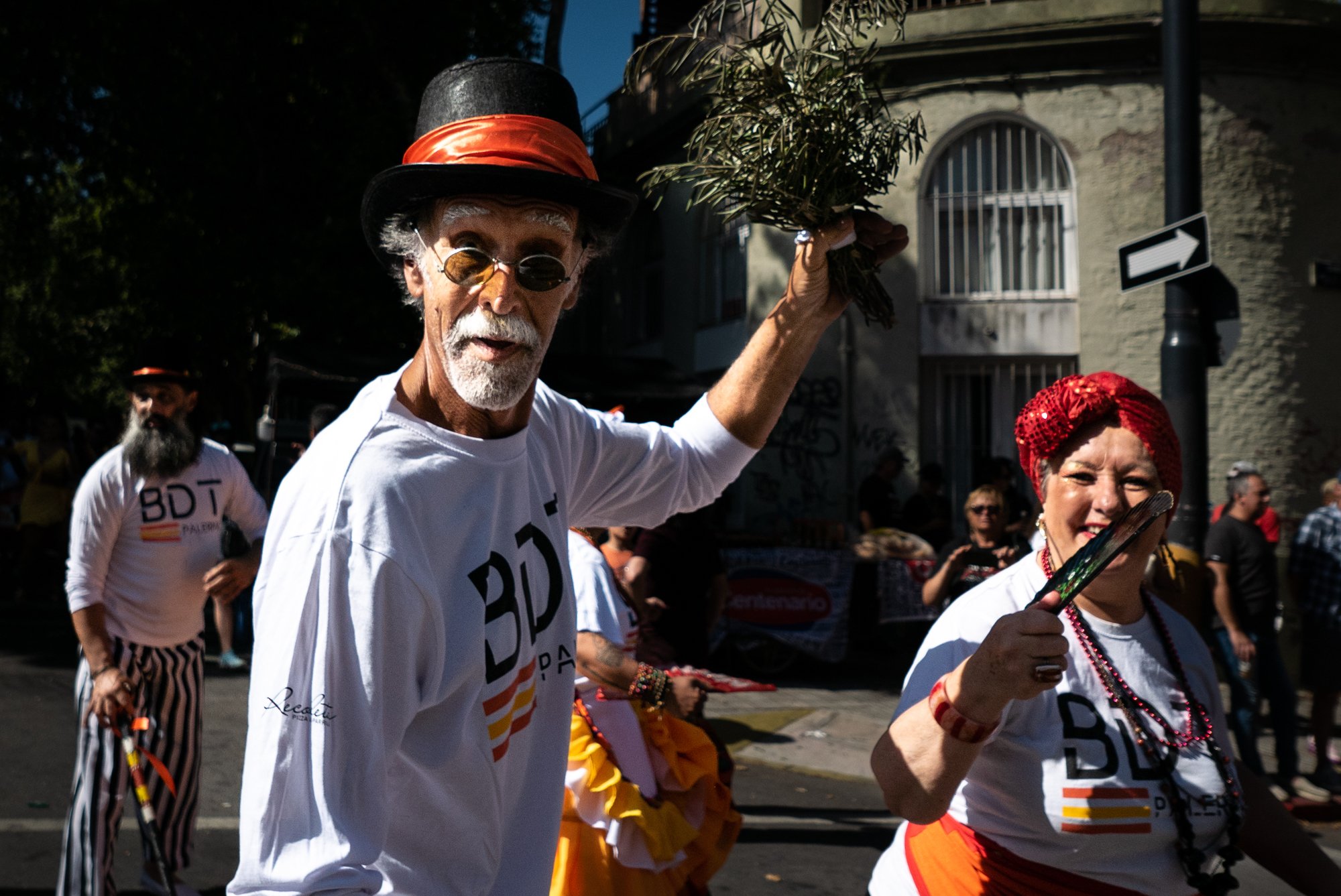
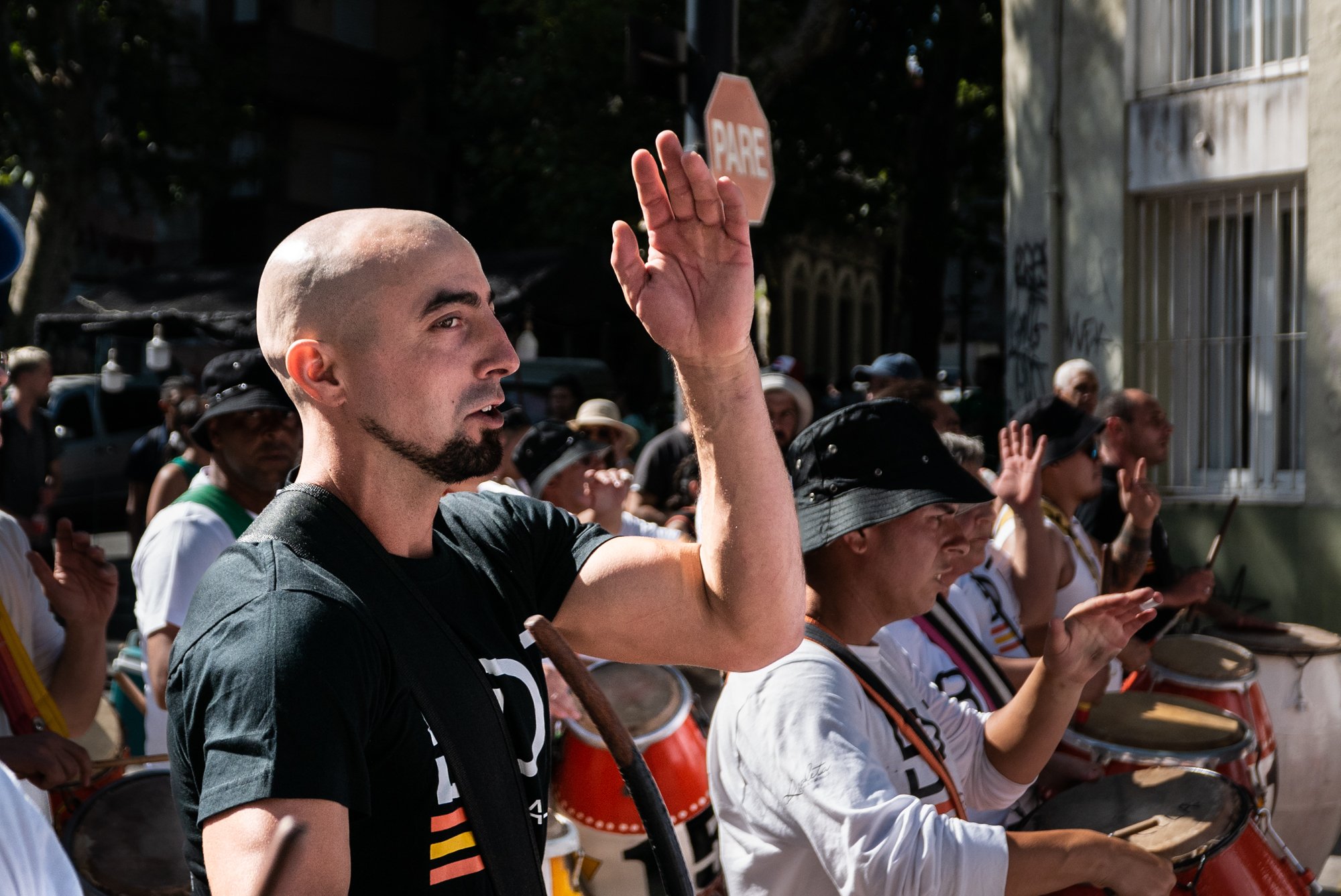
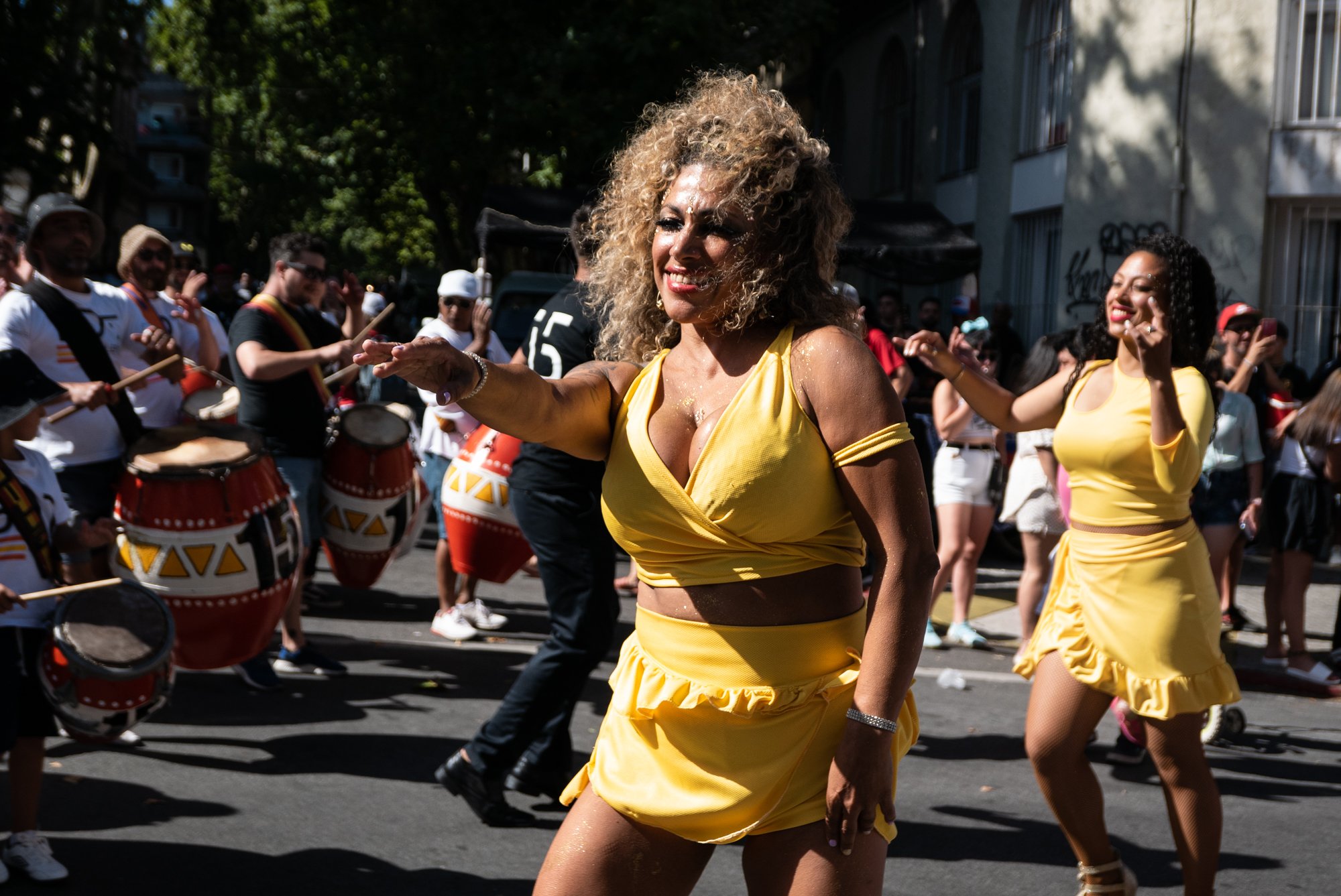
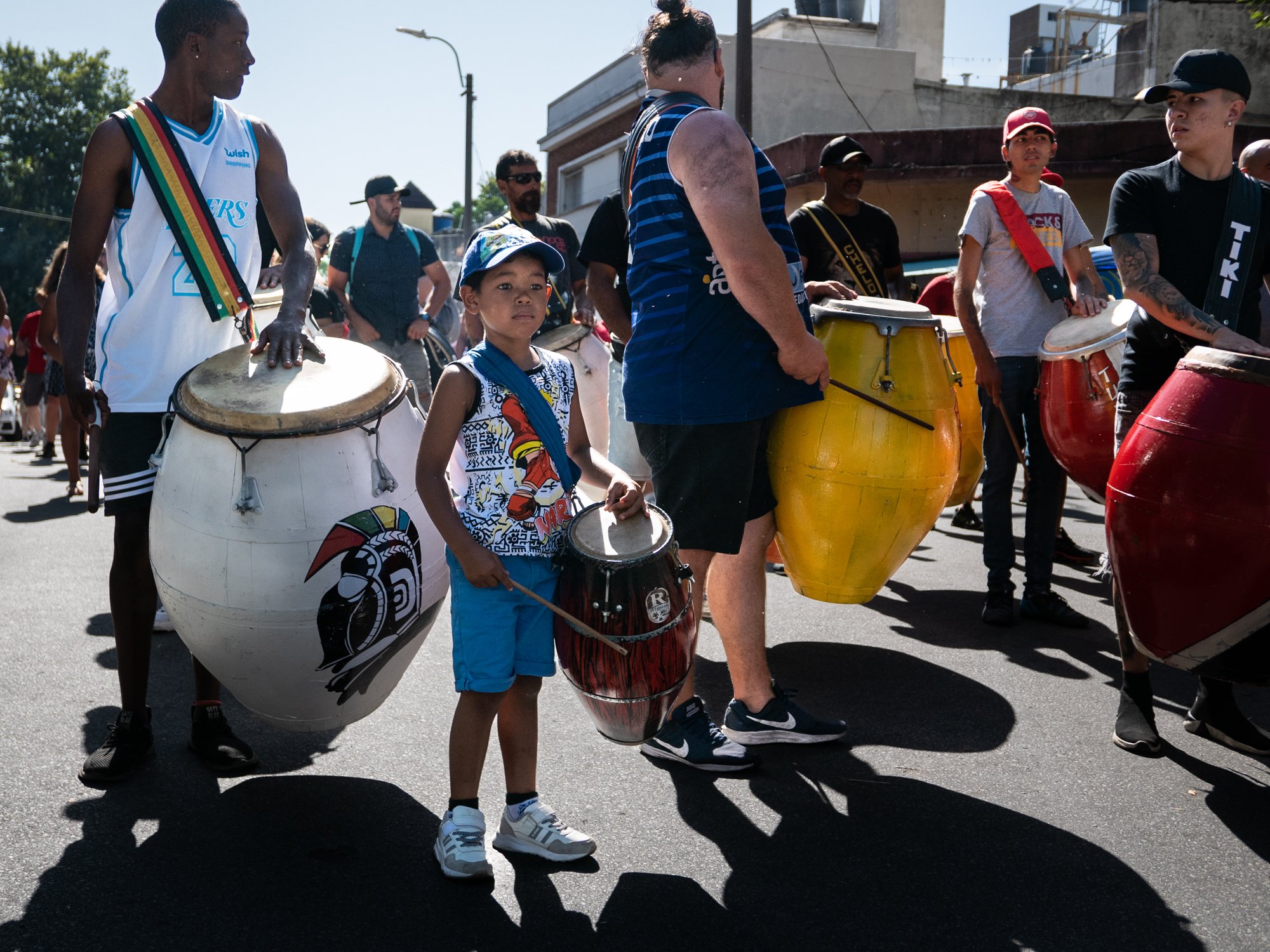
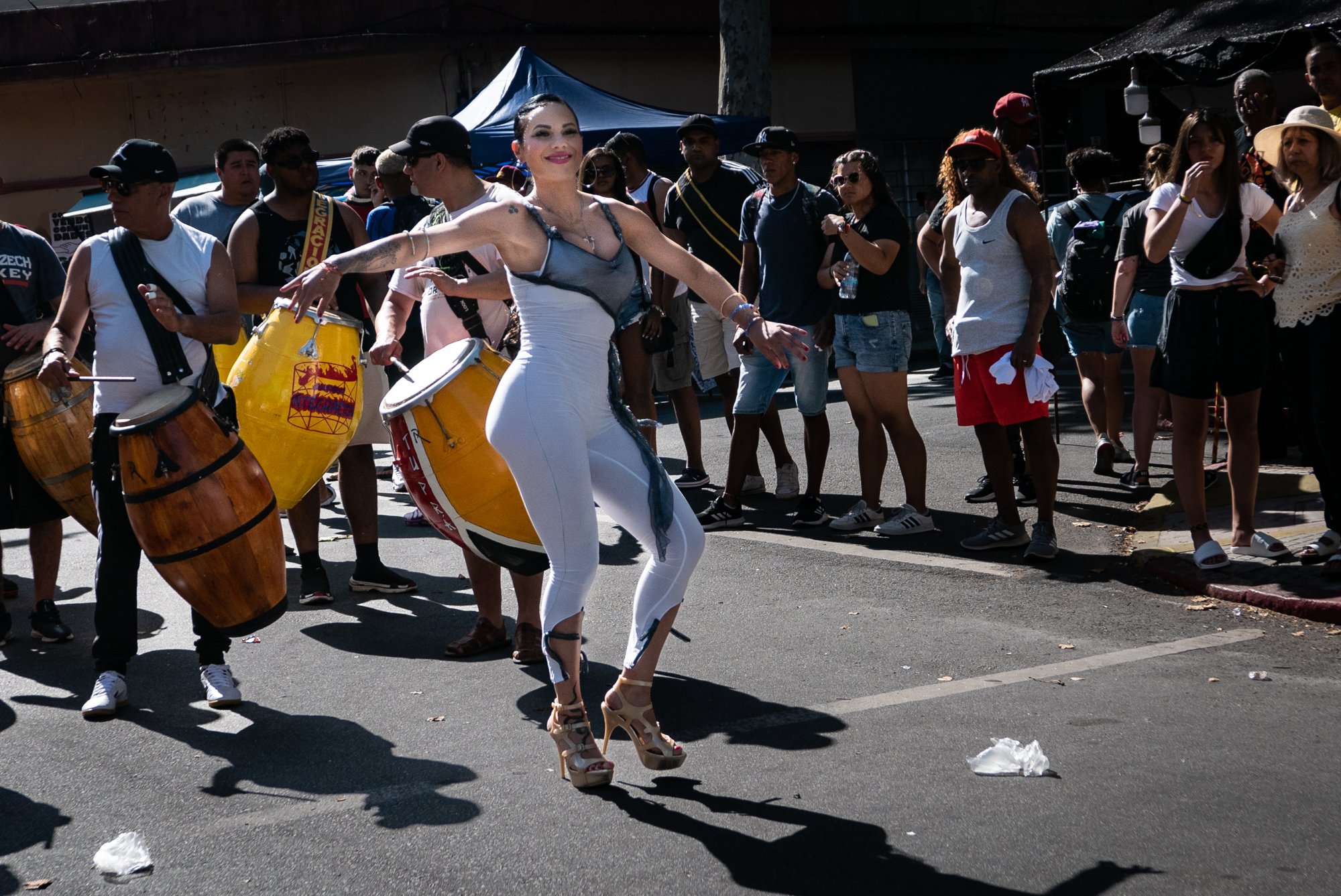
My name is Eduardo Storch, I am 76 years old.
I was born and I live in Montevideo, the capital of Uruguay.
I am an OBGYN and have been practising Obstetrics and Gynecology since 1973. I retired from clinical practice 3 years ago.
I am an amateur photographer and about 10 years ago I began to face it more seriously. I went to a Photography School where I did basic courses and workshops and continued attending other workshops in order to have a more complete vision. In all of them, I participated in collective exhibitions. I am currently participating in a workshop of Street Photography and Photojournalism, which is what I am most interested in. In the last three years, since my retirement, I have dedicated more seriously to photography. In 2020 I obtained the second prize in the Photography Contests of the Uruguayan Medical Association (CMU) and in the Uruguayan Medical Labor Union (SMU). In 2021 I obtained a National Award from the Ministry of Culture and Education and first prize at SMU. In 2022 I won the first prize of SMU again I have done a couple of projects about "street work", and another about "people over 90 years old" - "Nonagenarians" and I am looking forward to improving my work





















